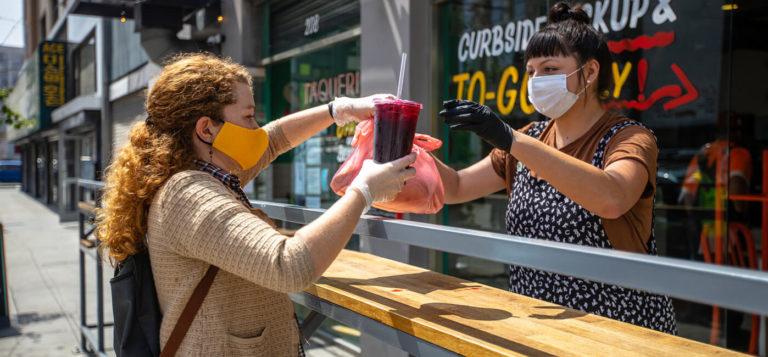“The over 50s have all the money.”
A stark and direct point but a fact, nevertheless, that appears to have fallen through the cracks when it comes to brand marketing and advertising. Forming the pinnacle of a passionate discussion at the Festival of Marketing, it seems that this group ‘with all the money’ is not only being misunderstood by the world of advertising, but a prime million-pound marketing opportunity is being missed.
At a period when brands are grappling for consumer attention and need to innovate and adapt to rapidly changing consumer habits, is now a vital time to learn from all consumers? And should brands be doing more to understand the value each group brings to the marketing mix?
The Festival of Marketing panel debate, hosted by Carrie Lonton (Co-Founder of Mumsnet and Gransnet), kicked off with a really interesting introduction to their own research study: ‘Advertising to over-50s – Ageism in advertising: Fighting marketing’s unconscious bias’.
Gransnet, a product sharing and social site, surveyed over 1,000 of its aged 50+ users to discover how they felt about advertisers and advertising. Some of the most fascinating results included: 78% felt under and mis-represented in advertising, with 87% stating marketing used by technology and gadget brands to be the worst offenders. 62% believe they are ignored because advertisers are too young to understand their demographic, with 49% choosing to actively avoid brands who ignore them.
So, when thinking about the 50+ what are brands missing? And what can they do to engage with and market to a generation with more disposable income than most?
It’s a time for change. With conversations around equality and unconscious bias featuring heavily across the industry, it’s time to really listen to audiences, re-think assumptions and traditional media habits, and break with convention to reach an audience who are far from ‘stuck in their ways’.
Take one of the panellists Suzi Grant for instance. As the blogger of ‘Alternative Ageing’ she is an all-round inspiration to the 50+. Not only is she running a successful vintage fashion and style blog but is a prime example of how people should be viewed for their interests, over being categorised by demographics. She is tech-savvy, fashionable, full of opinion and embodies everything brand marketers like to focus on. Whilst Suzi is a unique character, the saying ‘young at heart’ rings true. This generation may be older and wiser than typical millennial audiences, but inside they are not so far from our 20+ selves. More often than not they are just as fun and trendy, as engaged, and as fascinating to create compelling content for.
The panel* agreed that some beauty brands, including L’Oréal, have gone some way into addressing this. ‘Age Perfect’ with Helen Mirren, for instance, was a well-conducted piece that leveraged a well-regarded influencer to speak to a specific market. But these campaigns are often either token or just too few and far between. What brands really need to do is stop playing by age and focus more attention on the general attitudes of consumers. They need to understand the power of real-world behaviours and use it to their advantage. This could be the key to opening the door to a wider audience. The audience who have the spending power to make a difference.
At GroundTruth we believe in the power of place to understand consumers based on their real-world behaviours. Where we go is the greatest indicator of true intent and can be used to speak to consumers about the things that matter to them most. With our proprietary Blueprints technology, we can verify visits in key locations and use it to build audiences, as well as to identify where consumers over-index.
Looking specifically at ‘baby boomers’, using GroundTruth insights we can determine where else this group regularly visit, to help brands reach this audience with relevant messaging. Our UK data shows this group most often over-indexes at established value supermarkets (up to 136%), as well as home furnishing (79%) and DIY stores (54%), suggesting the home is important to them.
Using location tactics, brands can look to build a strategy that focuses beyond demographics.
Insights can be used to not only target this audience in context but build a better understanding of their general habits and interests, to help a variety of brands reach them in the moments and places that matter most. Take travel brands for instance. They have an audience at their feet with time on their hands, more flexible and disposable income as they enter retirement and a thirst to see the world. Using location tactics these brands can look to build a strategy that focuses beyond demographics. They can look at those most regularly seen at airports or key transport hubs too, and use it to build a campaign that offers something more and provides real value for consumers.
Contact us today to learn more about real-world location behaviours and how GroundTruth can deliver proven results.
*Panellists:
- Chair: Carrie Longton. Co-founder – Mumsnet and Gransnet
- Lara Crisp, Editor – Gransnet
- Suzi Grant, Blogger, Author & Broadcaster – Alternative Ageing
- Tanya Joseph, Director of External Relations – Nationwide Building Society
- Tom Goodwin, Columnist, Author and Head of Innovation – Zenith





